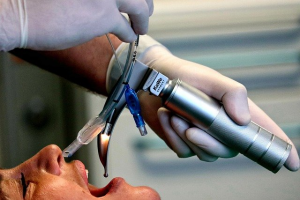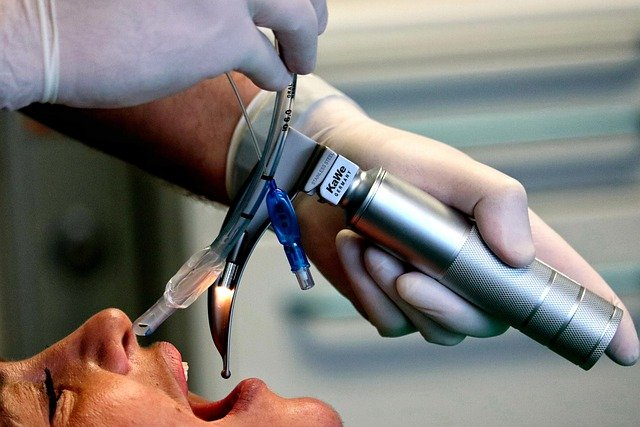The administration of supplemental Coenzyme Q10 in addition to conventional medical treatment has beneficial effects on traumatic injury patients in the intensive care unit and has no observed adverse effects.

Prolonged mechanical ventilation of patients in intensive care units can have adverse effects. In this study, administration of 400 milligrams of Coenzyme Q10 daily significantly reduced the length of stay in the intensive care unit and the duration of the mechanical ventilation.
This is the conclusion from a clinical trial that enrolled patients who had been admitted to the intensive care unit [Hasanloei 2021].
The problem: trauma
-Traumatic injury is not uncommon: nearly one-third of the patients admitted to a typical intensive care unit in pre-Covid 19 days were admitted with traumatic injuries of one type or another.
-In many countries, traumatic injury is the third leading cause of death in hospitals.
-Many trauma patients require intubation and mechanical ventilation. Prolonged mechanical ventilation has significant adverse effects on the physical health of patients; it can cause severe complications in patients. Consequently, the medical staff are concerned to take eligible patients off the mechanical ventilation as soon as possible.
The hypothesis: Coenzyme Q10 as adjunctive treatment for trauma
-Long-term mechanical ventilation in trauma patients causes increased of oxidative stress, increased endothelial injury, increased mitochondrial dysfunction, tissue injury, organ failure, and death.
–Coenzyme Q10 as a lipid-soluble antioxidant can have beneficial effects in trauma patients on mechanical ventilation: reduction of oxidative stress, reduction of inflammation, reduction of endothelial dysfunction, improved mitochondrial function.
The clinical trial: 400 mg/day Coenzyme Q10 for seven days
-From September 2019 to January 2020, researchers enrolled forty traumatic injury patients with sub-therapeutic plasma CoQ10 levels (below 2.5 mg/L) in a randomized controlled trial.
-The study participants included adult patients (age: 18–65 years) with an expected need of mechanical ventilation for at least 48 hours and an expected stay in the intensive care unit of at least seven days.
-The patients received either 400 mg/day of Coenzyme Q10 (100 mg administered every six hours by the sublingual route) or matching placebos for seven days.
Assessment of outcomes: Adjunctive CoQ10 treatment for trauma patients
-No patients were lost to follow up in the clinical trial.
-No side effects were reported following administration of Coenzyme Q10.
-The active treatment resulted in a significant increase in plasma total CoQ10 concentration compared to the placebo treatment.
Clinical outcomes: CoQ10 administration to trauma patients
-Seven-day administration of 400 mg/day of Coenzyme Q10 reduced the plasma interleukin-6 levels significantly compared to placebo administration. IL-6 is a known bio-marker for inflammation.
-Seven-day administration of 400 mg/day of Coenzyme Q10 reduced the serum values of malondialdehyde significantly compared to the placebo group. Malondialdehyde is a known bio-marker for oxidative stress.
– Seven-day administration of 400 mg/day of Coenzyme Q10 reduced considerably the length of the trauma patients’ stay in the ICU and in the hospital and significantly reduced the duration of the mechanical ventilation.
CoQ10 adjuvant therapy to shorten the period of mechanical ventilation
-Mechanical ventilation is ordered for critically ill patients in an attempt to save their lives.
-Unfortunately, prolonged mechanical ventilation can damage lung tissue and cause ventilator-induced lung injury. It can also cause reduced diaphragm strength and increased diaphragm dysfunction.
-Consequently, it is important to reduce the amount of time that critically ill patients spend on mechanical ventilation.
-Given the excellent safety profile of Coenzyme Q10 supplementation [Hidaka 2008], raising CoQ10 plasma concentrations to therapeutic levels (above 2.5 milligrams per liter) has a positive benefit/risk ratio.
Summary: Choosing the right CoQ10 preparation for traumatic injury patients
–Not all CoQ10 supplements are equally well-absorbed, not even if they have been manufactured with the same raw material. The absorption and bio-availability and efficacy of Coenzyme Q10 depends very much on the composition and formulation of the CoQ10 capsule [Lopez-Lluch 2019].
-The manufacturing process – combining the right carrier oils with the Coenzyme Q10 at the right temperatures in the heating and cooling processes – is expensive. It is not likely that a less expensive CoQ10 product will be as effective as a more expensive CoQ10 product. Money spent on a cheap CoQ10 product is likely to be money wasted [Lopez-Lluch 2019].
-There have been many misleading marketing claims for the ubiquinol version of Coenzyme Q10: the research shows that it is not necessary to take a ubiquinol supplement to get enough ubiquinol in the blood and lipoproteins. A well-formulated ubiquinone CoQ10 supplement will do the job [Mantle & Dybring 2020].
Sources
Hasanloei MAV, Zeinaly A, Rahimlou M, Houshyar H, Moonesirad S, Hashemi R. Effect of coenzyme Q10 supplementation on oxidative stress and clinical outcomes in patients with low levels of coenzyme Q10 admitted to the intensive care unit. J Nutr Sci. 2021;10:e48.
Hidaka T, Fujii K, Funahashi I, Fukutomi N, Hosoe K. Safety assessment of coenzyme Q10 (CoQ10). Biofactors. 2008;32(1-4):199-208.
López-Lluch G, Del Pozo-Cruz J, Sánchez-Cuesta A, Cortés-Rodríguez AB, Navas P. Bioavailability of coenzyme Q10 supplements depends on carrier lipids and solubilization. Nutrition. 2019 Jan;57:133-140.
Mantle D, Dybring A. Bioavailability of Coenzyme Q10: An Overview of the Absorption Process and Subsequent Metabolism. Antioxidants (Basel). 2020 May 5;9(5):386.
The information presented in this review article is not intended as medical advice and should not be used as such.
15 October 2021



Leave A Comment